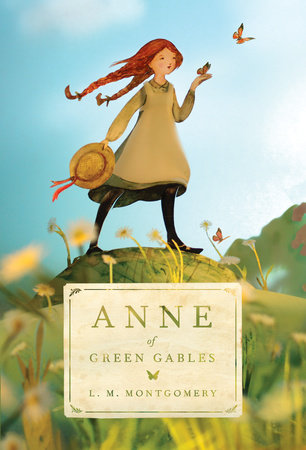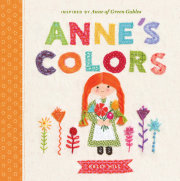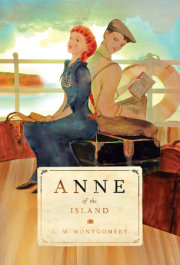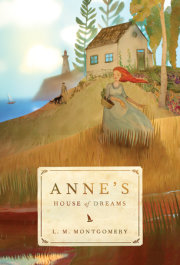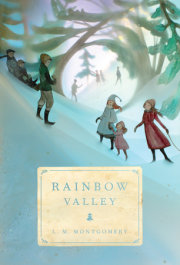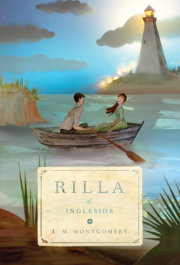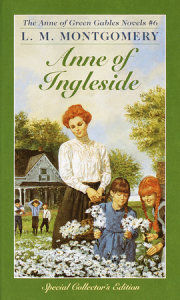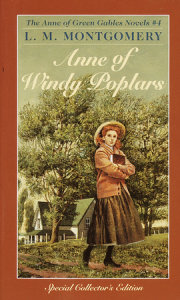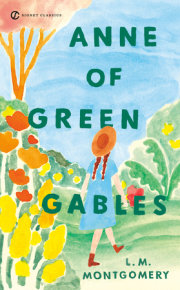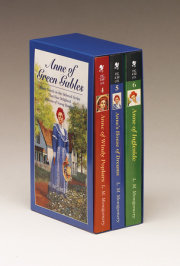Daring was the fashionable amusement among the Avonlea small fry just then. It had begun among the boys, but soon spread to the girls, and all the silly things that were done in Avonlea that summer because the doers thereof were “dared” to do them would fill a book by themselves. . . .
Now, to “walk” board fences requires more skill and steadiness of head and heel than one might suppose who has never tried it. But Josie Pye, if deficient in some qualities that make for popularity, had at least a natural and inborn gift, duly cultivated, for walking board fences. Josie walked the Barry fence with an airy unconcern which seemed to imply that a little thing like that wasn’t worth a “dare.” Reluctant admiration greeted her exploit, for most of the other girls could appreciate it, having suffered many things themselves in their efforts to walk fences. Josie descended from her perch, flushed with victory, and darted a defiant glance at Anne.
Anne tossed her red braids.
“I don’t think it’s such a very wonderful thing to walk a little, low, board fence,” she said. “I knew a girl in Marysville who could walk the ridge-pole of a roof.”
“I don’t believe it,” said Josie flatly. “I don’t believe anybody could walk a ridge-pole.
You couldn’t, anyhow.”
“Couldn’t I?” cried Anne rashly.
“Then I dare you to do it,” said Josie defiantly. “I dare you to climb up there and walk the ridge-pole of Mr. Barry’s kitchen roof.”
Anne turned pale, but there was clearly only one thing to be done. She walked towards the house, where a ladder was leaning against the kitchen roof. All the fifth-class girls said, “Oh!” partly in excitement, partly in dismay.
“Don’t you do it, Anne,” entreated Diana. “You’ll fall off and be killed. Never mind Josie Pye. It isn’t fair to dare anybody to do anything so dangerous.”
“I must do it. My honour is at stake,” said Anne solemnly. “I shall walk that ridge-pole, Diana, or perish in the attempt. If I am killed you are to have my pearl bead ring.”
Anne climbed the ladder amid breathless silence, gained the ridge-pole, balanced herself uprightly on that precarious footing, and started to walk along it, dizzily conscious that she was uncomfortably high up in the world and that walking ridge-poles was not a thing in which your imagination helped you out much. Nevertheless, she managed to take several steps before the catastrophe came. Then she swayed, lost her balance, stumbled, staggered and fell, sliding down over the sun-baked roof and crashing off it through the tangle of Virginia creeper beneath — all before the dismayed circle below could give a simultaneous, terrified shriek.
If Anne had tumbled off the roof on the side up which she ascended Diana would probably have fallen heir to the pearl bead ring then and there. Fortunately she fell on the other side, where the roof extended down over the porch so nearly to the ground that a fall therefrom was a much less serious thing.
Nevertheless, when Diana and the other girls had rushed frantically around the house — except Ruby Gillis, who remained as if rooted to the ground and went into hysterics — they found Anne lying all white and limp among the wreck and ruin of the Virginia creeper.
“Anne, are you killed?” shrieked Diana, throwing herself on her knees beside her friend. “Oh, Anne, dear Anne, speak just one word to me and tell me if you’re killed.”
To the immense relief of all the girls, and especially of Josie Pye, who, in spite of lack of imagination, had been seized with horrible visions of a future branded as the girl who was the cause of Anne Shirley’s early and tragic death, Anne sat dizzily up and answered uncertainly:
“No, Diana, I am not killed, but I think I am rendered unconscious.”
Copyright © 2008 by L.M. Montgomery, Afterword by Margaret Atwood. All rights reserved. No part of this excerpt may be reproduced or reprinted without permission in writing from the publisher.





